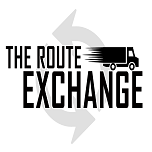What is an ATM Route?
Automated Teller Machines (ATMs) allow users to withdraw and deposit money by using their debit bank cards. ATMs are typically located in high traffic and consumer friendly areas all over the world. While many ATMs are bank owned, there are millions of “off premises” ATMs that are privately owned and generate income for their owner operator. An ATM Route can generate millions of dollars in revenue per year through the withdraw fees associated with the machine. For example, the average ATM fee is typically between $1.50 and $2.50. One ATM, with 10 transactions per day, will generate approximately $600 in revenue per month.
How to run an ATM Route
The most important components of an ATM Route are the machines themselves and the locations of them. High traffic areas that require cash purchases are great for an ATM Route owner. Such areas might include amusement parks, sport venues, malls, etc. ATMs are also very successful in locations such as convenience stores/gas stations because they can save the ATM user a trip to their bank.
ATM Route owners need to service their machines on a regular basis. The service schedule would depend on how frequently each ATM is used and the amount of money being withdrawn. The owner of the route is responsible for keeping the machines stocked with cash and in good working order. There are a number of ATM monitoring software options which allow owners to access detailed information on all of their ATMs remotely and instantly.
Owners tend to have extremely flexible schedules. Route service can be completed any time that access to the ATMs is available. The owner has the ability to buy, move, or sell any of their ATMs. This allows them to have a direct impact on their income. The emergence of cryptocurrency (e.g. bitcoin) ATMs is another promising development for ATM Route owners.
Feel free to browse our route listings or contact us if you have any further questions. Thanks!

